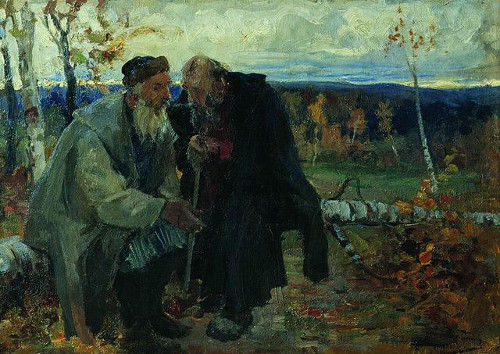
obolary
adj. poor or impecunious
inopious
adj. lacking wealth or resources; needy
ptochocracy
n. government by the poor

obolary
adj. poor or impecunious
inopious
adj. lacking wealth or resources; needy
ptochocracy
n. government by the poor

macrobian
adj. long-lived
annosity
n. fullness of years, length of life, agedness
Index entries from A. Lapthorn Smith’s How to Be Useful and Happy From Sixty to Ninety, 1922:
Absurdity of voluntary retirement at sixty
Adding ten years to life
Alcohol as cure for insomnia, very bad
All day in garden
Beard, long white, don’t wear
Carriage and pair shortens life
Cause of insomnia must be found
Cook, good, source of danger to elderly men
Crime to die rich
Engine drivers over sixty, what to do with them
Garrett, Mrs., of Penge, active voter at 102
If no relatives, spend on poor
Young people, company of, at sixty, how to keep

juvencle
n. a young girl
minauderie
n. a coquettish manner or air
increpation
n. a chiding, reproof, or rebuke
porporate
adj. clad in purple
titivil
n. “Name for a devil said to collect fragments of words dropped, skipped, or mumbled in the recitation of divine service, and to carry them to hell, to be registered against the offender.” [OED]
linguished
adj. skilled in language
logofascinated
adj. fascinated by words
logodaedaly
n. cunning in words; “verbal legerdemain”
oligoglottism
n. limited knowledge of languages
micropsychy
n. faint-heartedness
abulia
n. an inability to act decisively
quakebuttock
n. a coward

gynophagite
n. an eater of women
androphagous
adj. eating men
brephophagist
n. one who eats babies
rosarian
n. a rose fancier; one interested or engaged in the cultivation of roses
The rose cultivar “Whitfield” is named for English comedy actress June Whitfield.
She said, “There is a rose named after me. The catalogue describes it as ‘superb for bedding, best up against a wall.'”
mumpsimus
n. a person who obstinately adheres to old ways, particularly in language; an ignorant and bigoted opponent of reform (also a custom so adhered to)
(Thanks, Cindy.)
febrifacient
adj. producing fever
The 1895 meeting of the Association of American Physicians saw a sobering report: Abraham Jacobi presented the case of a young man whose temperature had reached 149 degrees.
Nonsense, objected William Henry Welch. Such an observation was impossible. He recalled a similar report in the Journal of the American Medical Association (March 31, 1891) in which a Dr. Galbraith of Omaha had found a temperature of 171 degrees in a young woman.
“I do not undertake to explain in what way deception was practised, but there is no doubt in my mind that there was deception,” he said. “Such temperatures as those recorded in Dr. Galbraith’s and Dr. Jacobi’s cases are far above the temperature of heat rigor of mammalian muscle, and are destructive of the life of animal cells.”
Jacobi defended himself: Perhaps medicine simply hadn’t developed a theory to account for such things. But another physician told Welch that Galbraith’s case at least had a perfectly satisfactory explanation — another doctor had caught her in “the old-fashioned trick of heating the thermometer by a hot bottle in the bed.”